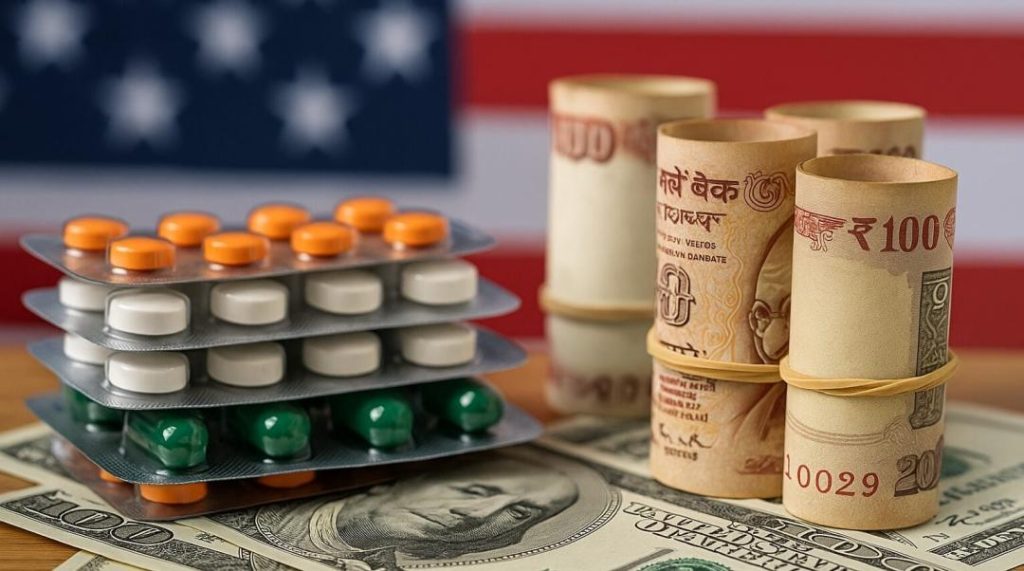
How Tariffs on Indian Medical Supplies May Backfire on the US?
The ongoing trade tensions between the United States and India have taken a toll on the medical industry, with US tariffs on Indian medical supplies driving up healthcare costs and contributing to a significant rise in overall healthcare expenses. According to Suddhir Jain, the Founder and Managing Director of Bionova Group, tariffs have pushed medical device prices up by as much as 25%, adding billions more to the US medical cost burden.
In this blog post, we will explore the implications of US tariffs on Indian medical supplies and how it may backfire on the US in the long run.
The Impact of Tariffs on Medical Devices
The medical device industry is a significant contributor to the US economy, with a market size of over $150 billion. India is a major supplier of medical devices to the US, accounting for over 20% of the country’s medical device imports. However, the imposition of tariffs on Indian medical supplies has led to a surge in prices, making it more challenging for hospitals and patients to access essential medical devices.
The tariffs, which were imposed in 2018, are designed to protect the US medical device industry from what the Trump administration perceived as unfair trade practices by India. However, the move has had unintended consequences, including increased costs for hospitals, patients, and the healthcare system as a whole.
Rise in Healthcare Expenses
The increased costs of medical devices due to tariffs have a ripple effect on the healthcare system, leading to higher expenses for hospitals, patients, and the government. According to a report by the Association of American Medical Colleges, the tariffs have added an estimated $1.4 billion to the cost of medical devices in the US.
This increase in costs is not limited to medical devices alone. The tariffs have also led to higher costs for pharmaceuticals, medical equipment, and other healthcare-related products. The cumulative effect of these increased costs is a significant rise in overall healthcare expenses, which could have far-reaching implications for the US healthcare system.
Impact on Patients and the Healthcare System
The rise in healthcare expenses due to tariffs has a direct impact on patients and the healthcare system. Higher costs for medical devices and pharmaceuticals can lead to reduced access to healthcare services, particularly for low-income and uninsured individuals.
Additionally, the increased costs can also lead to longer wait times for patients, as hospitals and healthcare providers struggle to absorb the higher costs. This can have serious consequences, particularly for patients with chronic conditions who require ongoing medical treatment.
Potential Consequences for the US Healthcare System
The long-term consequences of the tariffs on Indian medical supplies could be severe for the US healthcare system. Higher costs for medical devices and pharmaceuticals can lead to:
- Reduced access to healthcare services: Higher costs can lead to reduced access to healthcare services, particularly for low-income and uninsured individuals.
- Longer wait times: Hospitals and healthcare providers may struggle to absorb the higher costs, leading to longer wait times for patients.
- Increased healthcare costs: The cumulative effect of the tariffs could lead to increased healthcare costs, which could have far-reaching implications for the US healthcare system.
- Brain drain: The reduced access to healthcare services and increased costs could lead to a brain drain, as medical professionals and researchers may seek opportunities in countries with more accessible and affordable healthcare systems.
Strategic Industry Action
In light of the potential consequences of the tariffs on Indian medical supplies, it is essential for the industry to take strategic action to mitigate the impact. Some potential strategies include:
- Diversification: The industry should consider diversifying its supply chain to reduce dependence on a single country or region.
- Negotiations: The industry should engage in negotiations with the US government to reduce or eliminate the tariffs on Indian medical supplies.
- Research and development: The industry should invest in research and development to develop alternative sources of medical devices and pharmaceuticals.
- Patient advocacy: The industry should engage in patient advocacy efforts to raise awareness about the impact of the tariffs on healthcare services and access to medical devices.
Conclusion
The tariffs on Indian medical supplies may have unintended consequences for the US healthcare system. The increased costs of medical devices and pharmaceuticals can lead to reduced access to healthcare services, longer wait times, and increased healthcare costs. It is essential for the industry to take strategic action to mitigate the impact of the tariffs and ensure continued access to essential medical devices and pharmaceuticals.
Source
https://ascendants.in/founders-corner/us-tariffs-on-indian-medical-supplies/






